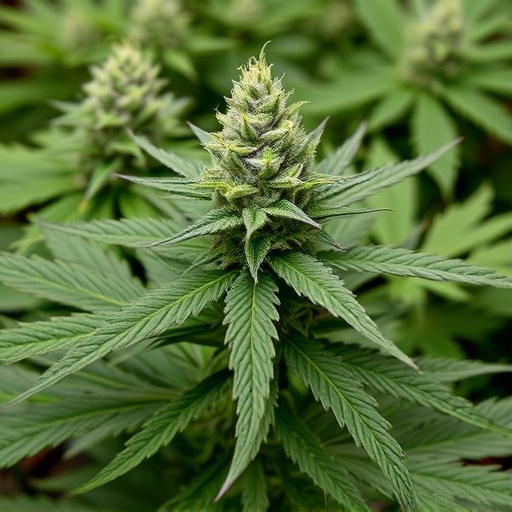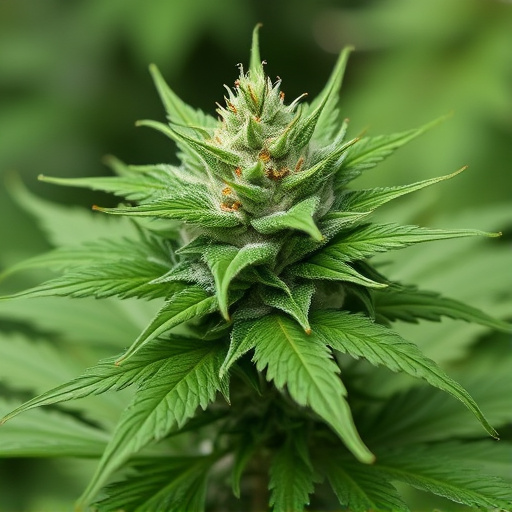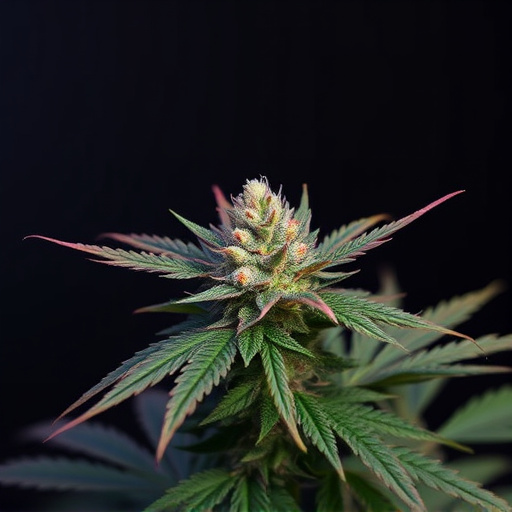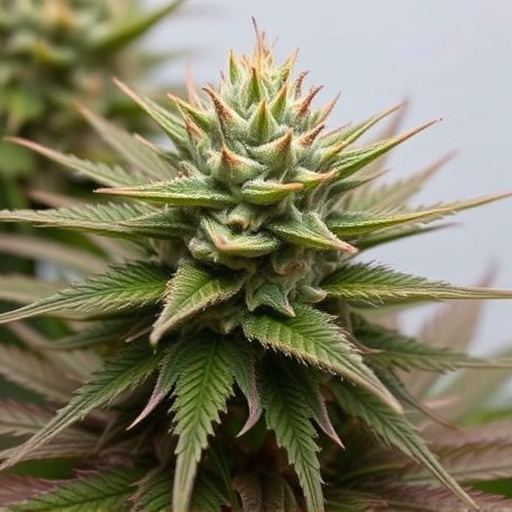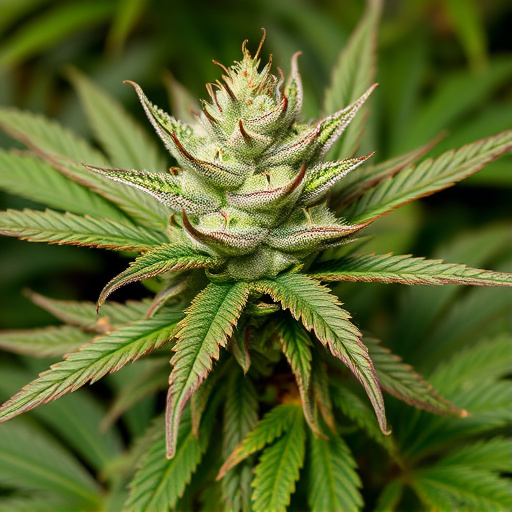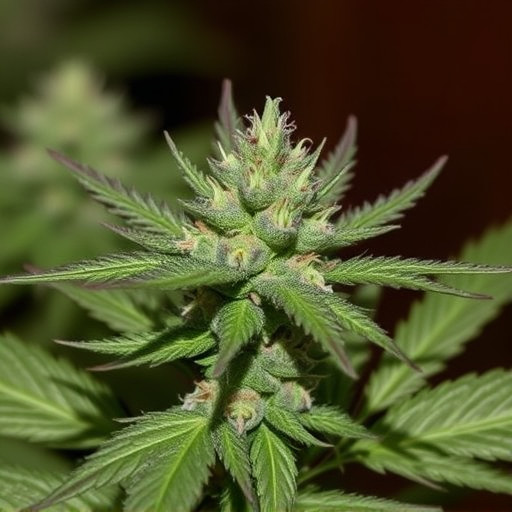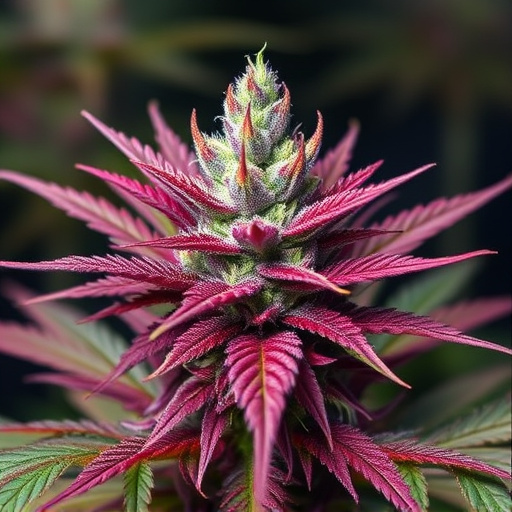The endocannabinoid system (ECS) interacts with tetrahydrocannabinol (THC) from cannabis, affecting physiological processes like appetite. While THC stimulates appetite, individual experiences vary based on strain characteristics and personal biology. Research into rare cannabis strains, high in both THC and CBD, reveals their potential to regulate hunger hormones leptin and ghrelin. These compounds offer therapeutic applications for eating disorders and weight management, with high-CBD strains reducing cravings and specific THC-rich breeds stimulating appetite.
“Unraveling the intricate relationship between THC (tetrahydrocannabinol) and hunger hormones reveals a fascinating aspect of cannabis’ complex biology. This article delves into how THC interacts with the endocannabinoid system, specifically targeting appetite-regulating mechanisms. We explore the role of cannabinoids in modulating hunger cues and discover the potential of rare cannabis strains as natural regulators of these hormones. By understanding these effects, we can uncover innovative approaches to managing appetite and offer unique insights for cannabis enthusiasts.”
- Understanding THC and Its Interaction with the Endocannabinoid System
- The Role of Cannabinoids in Regulating Appetite and Hunger Hormones
- Exploring Rare Cannabis Strains and Their Unique Effects on Hunger Hormones
Understanding THC and Its Interaction with the Endocannabinoid System
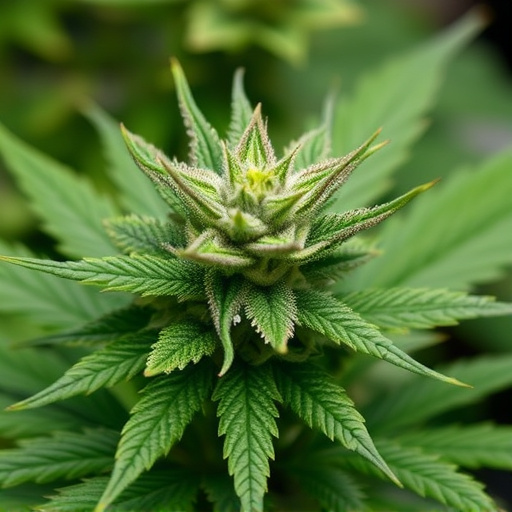
The primary active compound in cannabis, tetrahydrocannabinol (THC), interacts with our bodies’ endocannabinoid system (ECS). This intricate system plays a vital role in regulating various physiological processes, including appetite and hunger. The ECS consists of endocannabinoids, receptors, and enzymes that maintain balance and homeostasis in the body. When THC binds to specific receptors in the ECS, particularly CB1 receptors found in the brain and CB2 receptors in the immune system, it triggers a cascade of effects. This interaction can lead to altered feelings of hunger or satiety, which has sparked interest in understanding how rare cannabis strains with high THC content might influence these hormones.
Research suggests that THC’s impact on hunger is multifaceted. It can stimulate appetite by affecting certain brain regions involved in feeding behaviors and taste perception. This effect has been particularly noted in individuals who use cannabis for medical purposes, such as those with conditions like HIV or chronic pain, where increased appetite is a desired outcome. However, the story isn’t always straightforward; THC’s influence on hunger hormones can vary depending on strain characteristics and individual user experiences, making it an area of ongoing research interest, especially when exploring rare cannabis strains.
The Role of Cannabinoids in Regulating Appetite and Hunger Hormones

Cannabinoids, a group of chemical compounds found in the cannabis plant, have been studied for their potential effects on appetite and hunger hormones. While THC (tetrahydrocannabinol) is well-known for its psychoactive properties, it also plays a significant role in regulating these physiological processes. Research suggests that THC can interact with specific receptors in the brain, such as CB1 and CB2, which are part of the endocannabinoid system. This system is responsible for maintaining homeostasis, including appetite regulation.
The impact of rare cannabis strains, known for their unique cannabinoid profiles, on hunger hormones is an area of growing interest. These strains often contain elevated levels of THC along with other cannabinoids like CBD (cannabidiol). Studies indicate that the complex interplay between these compounds may influence the release and activity of key hunger hormones, such as leptin and ghrelin. By understanding how cannabinoids interact with the endocannabinoid system, researchers aim to uncover new insights into potential therapeutic applications for managing appetite-related conditions, even exploring their role in combating eating disorders and weight management.
Exploring Rare Cannabis Strains and Their Unique Effects on Hunger Hormones

The world of cannabis is vast, and among its diverse offerings lie certain rare strains that have garnered attention for their distinct properties. These strains, often cultivated with meticulous care, present unique profiles that extend beyond traditional THC content. One intriguing aspect researchers are exploring is their impact on hunger hormones, offering a potential new frontier in understanding the plant’s effects.
Rare cannabis strains, with their genetic peculiarities, may hold secrets to regulating appetite. Some varieties are known for inducing a profound sense of hunger, while others suppress it. For instance, certain high-CBD strains have been observed to reduce cravings and promote satiety, making them potentially valuable tools in managing eating disorders. Conversely, specific THC-rich breeds can stimulate the release of hunger hormones, providing insights into their use as appetite stimulants for individuals facing conditions like cancer or anorexia.
THC’s impact on hunger hormones is a fascinating aspect of the endocannabinoid system, offering potential therapeutic benefits. While common knowledge often focuses on its psychoactive effects, understanding how THC interacts with appetite-regulating hormones opens doors to innovative treatments for eating disorders and weight management. The exploration of rare cannabis strains further expands these possibilities, providing unique opportunities to tailor treatments for individual needs. By continuing to study these interactions, we can unlock a healthier future where cannabis-derived therapies play a pivotal role in managing hunger and promoting overall well-being.


